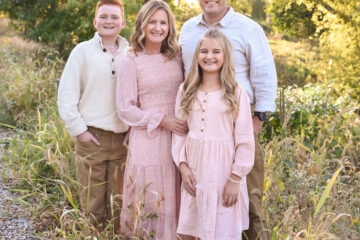Fewer than two-thirds of county and municipal boards are gender-balanced
By Emily Kestel, Fearless editor
For more than 10 years, Iowa law has required all state, county and municipal boards and commissions to be gender-balanced. It’s the only state to have the requirement for all levels of government.
State Sen. Jason Schultz, R-Schleswig, earlier this month introduced a bill to eliminate the requirement, saying it’s no longer necessary due to the advances made by women in the professional sphere. He also acknowledged that boards and commissions are having a hard time complying with the requirement.
“My reason for doing this is to respond to a number of complaints I have received from folks who are just having difficulty trying to fill their boards,” Schultz said in an Iowa Capital Dispatch article. “I don’t believe a gender balance requirement is necessary. I think that any motive in [creating the requirement] has been accomplished.”
A subcommittee meeting will be held on Jan. 18 at the statehouse at 2 p.m.
Gender balance on state-level boards and commissions has been required since 1987, but in 2009 the Iowa Legislature extended the requirement to include appointive county and municipal boards, which became effective in 2012.
To put it in practice, no person is to be appointed or reappointed to any board or commission if it would mean that the number of members of one gender was greater than the other. But in reality, there are no consequences if they aren’t balanced.
Since the law went into effect, the Carrie Chapman Catt Center for Women and Politics at Iowa State University has regularly examined the membership of county and municipal boards and commissions.
Catt Center director Karen Kedrowski, speaking on behalf of herself and not the university or the Board of Regents on the proposed legislation, said data shows there has been “measurable increases in the percentage of women that are serving, the percentage of women that are in leadership roles and the percentage of boards that are gender-balanced,” but added there is still room for improvement.
“Comparatively to other states, [Iowa] is doing really well. But my fear is … if you stop making this a requirement, then we will backslide. The percentage of boards and commissions that are gender-balanced will decline, because the message would be that it’s not important anymore,” Kedrowski said.
Gender balance at the county level
In its most recent data collection, the Catt Center found that women hold 38% of county board and commission seats while 61% of county boards and commissions are gender-balanced. (Many boards have an odd number of seats, which can lead to a disparity in the percentage of women on boards while still being considered gender-balanced.)
Of the 77 counties that provided data or had data readily accessible, eight have achieved gender balance on all seven boards and commissions examined, down from 14 in 2020. The boards were: planning and zoning, adjustment, compensation, review, conservation, health, and veterans affairs.
Counties that have achieved gender balance on all boards are: Bremer, Buchanan, Floyd, Guthrie, Mills, Muscatine, Van Buren and Winneshiek.
Gender balance at the municipal level
According to the Catt Center, 62% of city-level boards and commissions are gender-balanced. Twelve cities have achieved gender balance on all boards examined: Adel, Bettendorf, Bondurant, Dallas Center, Davenport, Fairfax, Fort Dodge, Independence, Iowa City, Le Mars, Walcott and Windsor Heights.
The nine boards the Catt Center examined were: airport, civil service, historic preservation, housing services, human rights, library, waterworks, planning and zoning, and zoning adjustment.
Of the 1,783 total board seats, 766 – or 43% – are held by women, with 87 vacancies.
Gender balance at the state level
There are roughly 180 appointive boards and commissions at the state level. These encompass a variety of areas, including the parole board, the Alcoholic Beverage Commission, judicial nominating commissions, and organizations like the Iowa Arts Council.
Monica Stone, deputy director of the Iowa Department of Human Rights, said she believes most state-level boards are gender-balanced.
“There might be a handful of commissions where it’s slightly unbalanced one way or another. But as a general rule, in state government we do meet the gender balance requirements, and the governor is very consistent in meeting that.
“Iowa has consistently been a leader in ensuring gender balance in representation in government and decision making,” Stone said.
Look for deeper analysis of the representation of Iowa women in public office in the Fearless newsletter in the coming weeks.


